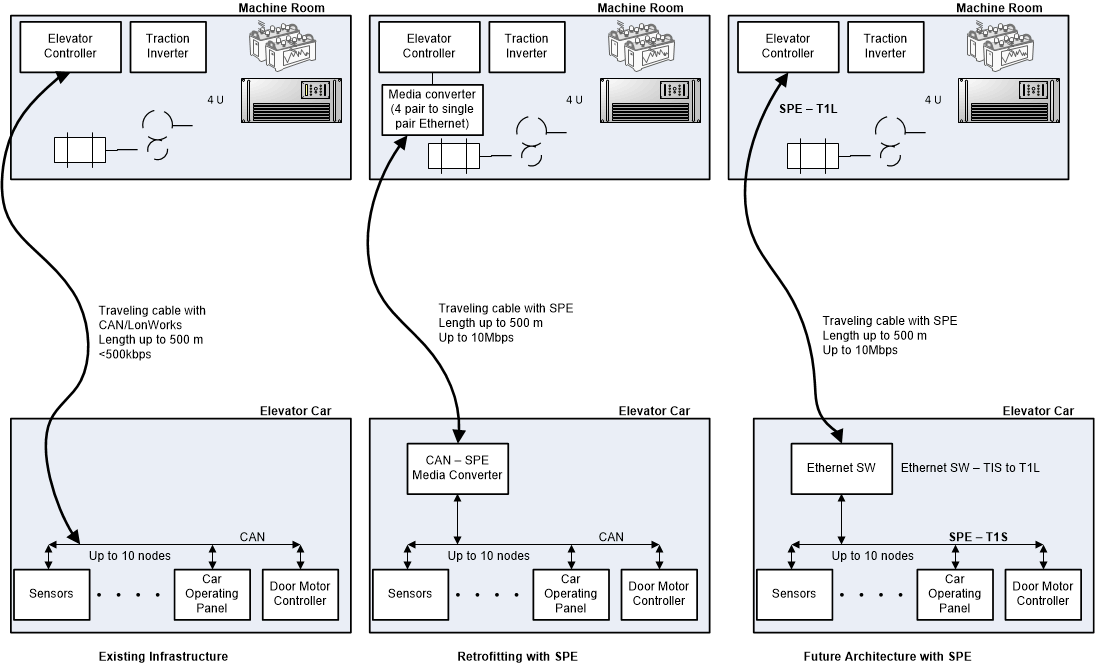SNLA360 October 2020 DP83TD510E
Vertical Transportation Applications
Elevators are a complex system. The main communication link between a moving elevator car and the machine room controller is through a travelling cable. The length of this cable can be anywhere from 10 to 500 m or longer, depending upon the height of the building. Controller Area Network (CAN) and LonWorks are common protocols used for elevator systems given their low speed requirements and required cable distances.
Cable reliability over a period of several years is important given the amount of stress it experiences during operation. As the elevator moves up and down, the cable needs to bend, which is not ideal for optical fiber cabling, so most elevator cables are made of copper. And given the cable length, standard Ethernet is not suitable because it can’t work beyond 100 m.
Now, with SPE offering 1-km distances and speeds up to 10 Mbps, it’s a good choice for next-generation elevator designs. The need for higher data rates between the elevator car and elevator controller is arising from:
Streaming video content from inside elevator cars back to machine room.
Relay of advertisements from machine room to elevator car.
Sending more data to the elevator controller from various sensors, along with data from equipment within the car to be used for predictive maintenance.
Upgrading existing elevators is equally as important as designing new elevators with more advanced features. One way to resolve retrofitting challenges is to have media converters like CAN to SPE inside the elevator car and SPE to standard Ethernet or CAN for the elevator controller. For next-generation systems, the elevator controller could incorporate a built-in SPE PHY 10BASE-T1L and the equipment within the car would be connected through SPE PHY 10BASE-T1S. The elevator car would also have a built-in 10BASE-T1S or 10BASE-T1L Ethernet switch to interface the car with the elevator controller. Emergency lights and communication systems within the elevator car could be powered through PoDL to ensure that there is no disruption of power.
 Elevator Car-to-Machine Room Communication.
Elevator Car-to-Machine Room Communication.